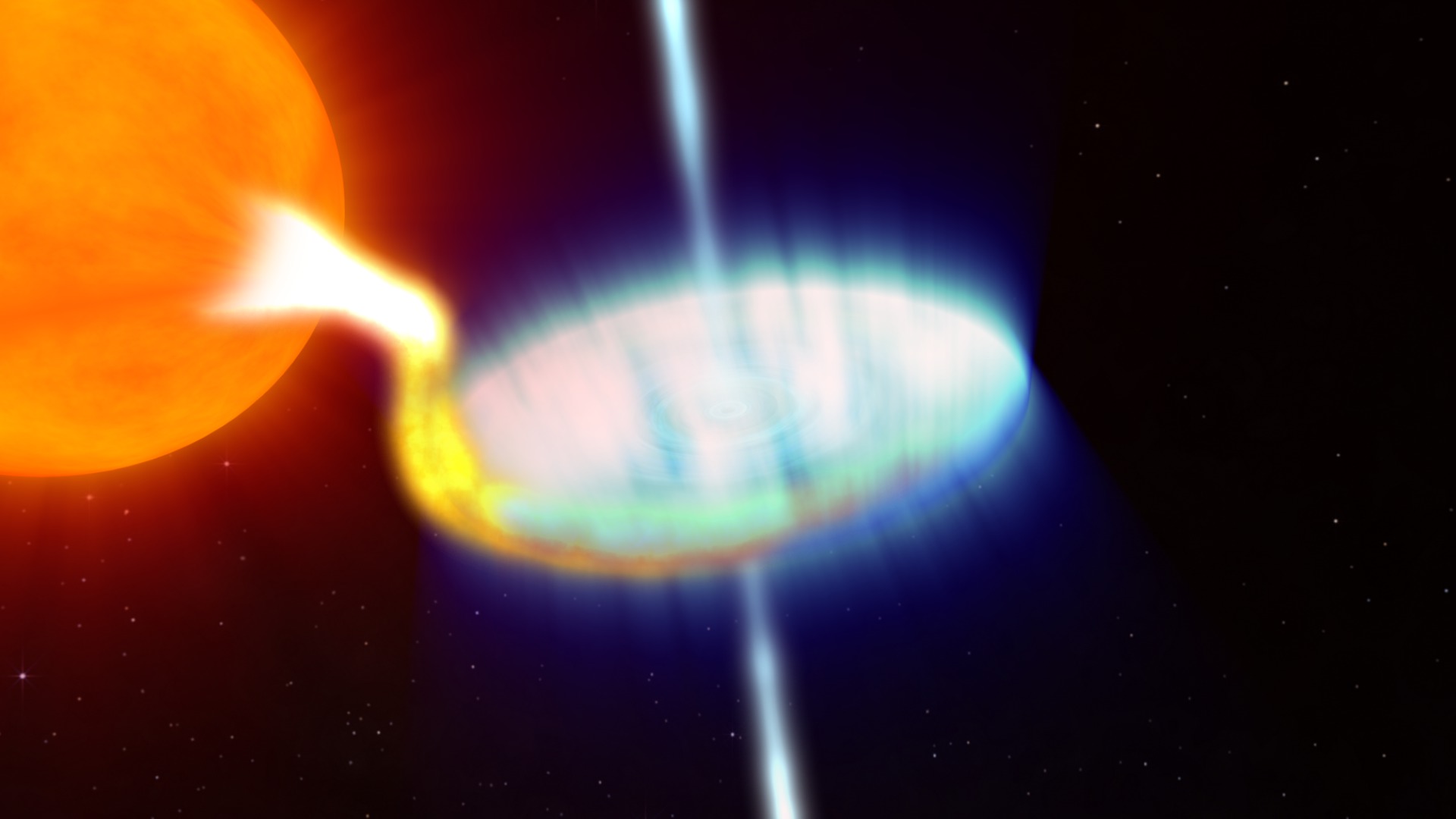X-ray Nova Reveals a New Black Hole in Our Galaxy
On Sept. 16, NASA's Swift satellite detected a rising tide of high-energy X-rays from a source toward the center of our Milky Way galaxy. The outburst, produced by a rare X-ray nova, announced the presence of a previously unknown stellar-mass black hole.
An X-ray nova is a short-lived X-ray source that appears suddenly, reaches its emission peak in a few days and then fades out over a period of months. The outburst arises when a torrent of stored gas suddenly rushes toward one of the most compact objects known, either a neutron star or a black hole.
Named Swift J1745-26 after the coordinates of its sky position, the nova is located a few degrees from the center of our galaxy toward the constellation Sagittarius. While astronomers do not know its precise distance, they think the object resides about 20,000 to 30,000 light-years away in the galaxy's inner region. The pattern of X-rays from the nova signals that the central object is a black hole.
Ground-based observatories detected infrared and radio emissions, but thick clouds of obscuring dust have prevented astronomers from catching Swift J1745-26 in visible light.
The black hole must be a member of a low-mass X-ray binary (LMXB) system, which includes a normal, sun-like star. A stream of gas flows from the normal star and enters into a storage disk around the black hole. In most LMXBs, the gas in the disk spirals inward, heats up as it heads toward the black hole, and produces a steady stream of X-rays.
But under certain conditions, stable flow within the disk depends on the rate of matter flowing into it from the companion star. At certain rates, the disk fails to maintain a steady internal flow and instead flips between two dramatically different conditions — a cooler, less ionized state where gas simply collects in the outer portion of the disk like water behind a dam, and a hotter, more ionized state that sends a tidal wave of gas surging toward the center.
This phenomenon, called the thermal-viscous limit cycle, helps astronomers explain transient outbursts across a wide range of systems, from protoplanetary disks around young stars, to dwarf novae - where the central object is a white dwarf star - and even bright emission from supermassive black holes in the hearts of distant galaxies.
Sequence of high resolution stills of Swift J1745-26 from September 13 to September 26, 2012.
Credit: NASA/Goddard Space Flight Center/S. Immler and H. Krimm

Swift J1745-26 with labels and scale of moon as it would appear in the field of view from Earth. This image is from September 18, 2012 when the source peaked in hard X-rays.
Credit: NASA/Goddard Space Flight Center/S. Immler and H. Krimm

Swift J1745-26. This image is from September 18, 2012 when the source peaked in hard X-rays. No Labels
Credit: NASA/Goddard Space Flight Center/S. Immler and H. Krimm
For More Information
Credits
Please give credit for this item to:
NASA/Goddard Space Flight Center. However, individual images should be credited as indicated above.
-
Animators
- Michael Lentz (USRA)
- Scott Wiessinger (USRA)
-
Video editor
- Scott Wiessinger (USRA)
-
Narrator
- Scott Wiessinger (USRA)
-
Producer
- Scott Wiessinger (USRA)
-
Scientists
- Stefan Immler (UMCP)
- Hans Krimm (USRA)
-
Writers
- Francis Reddy (Syneren Technologies)
- Scott Wiessinger (USRA)
Release date
This page was originally published on Friday, October 5, 2012.
This page was last updated on Wednesday, May 3, 2023 at 1:52 PM EDT.
Missions
This page is related to the following missions:Series
This page can be found in the following series:Tapes
The media on this page originally appeared on the following tapes:-
Flaring Black Hole
(ID: 2012103)
Thursday, October 4, 2012 at 4:00AM
Produced by - Robert Crippen (NASA)
Datasets used
-
[Swift]
ID: 217
Note: While we identify the data sets used on this page, we do not store any further details, nor the data sets themselves on our site.
